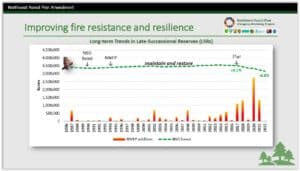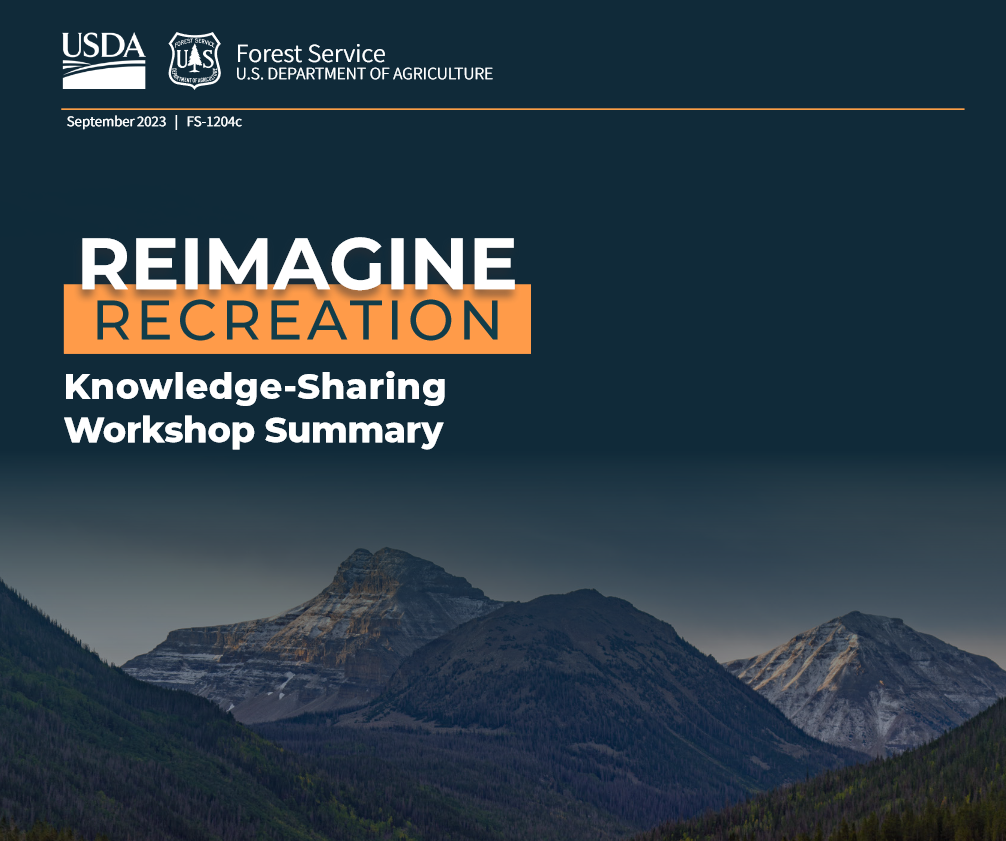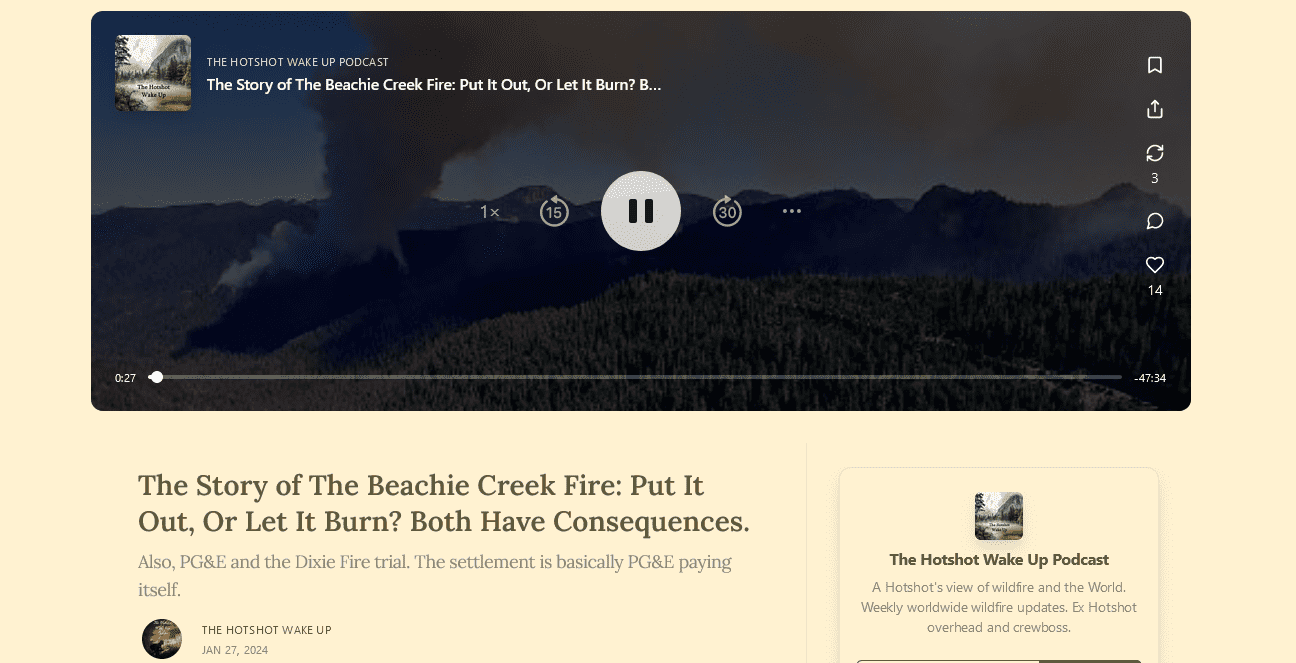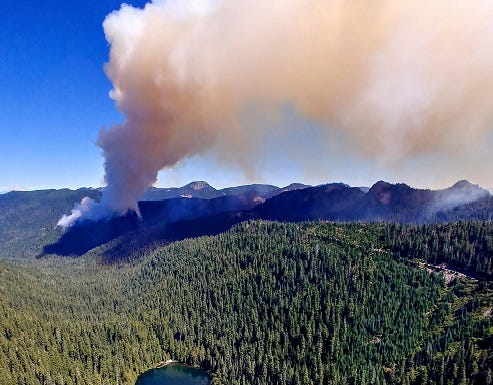U.S. Forest Service employees who gathered for a training in Rifle earlier this month weren’t there to learn about how to make use of newfangled things such as drones or artificial intelligence to do their jobs.
Rather, they were learning more about a resource that was vital to the Forest Service getting work done even in its early days and remains important today. And there to lead the lesson was Crosby Davidson, appropriately attired in chaps, boots and a cowboy hat.
“We affectionately call Crosby the horse whisperer for the Rocky Mountain Region” of the Forest Service, said Scott Woodall, lead rangeland ecologist for the White River National Forest.
Davidson is the lead packer for what’s called the Shoshone Specialty Pack String, a team of horses, mules and packers based out of the Shoshone National Forest in Wyoming. By virtue of its high level of experience and expertise, the team serves as a regional resource for the Forest Service when it comes to both higher-demand forest packing projects and training in the skills of horsemanship and packing.
In Rifle, Davidson was leading horsemanship instruction for employees from various parts of the White River National Forest with a range of experience, or lack thereof, in the subject.
He said that traveling around the Forest Service’s Rocky Mountain region, he occasionally runs into people who are surprised and interested to learn that the Forest Service has always had a pretty robust horse program, especially in areas with large areas of wilderness or roadless areas where vehicle access can’t be used to get materials and people into them.
“People seem pretty excited sometimes when we pull into the trail head and explain it to them,” Davidson said.
Woodall, whose job includes managing what the White River National Forest calls its livestock program, said 55% of the forest’s 2.3 million is wilderness or roadless acreage.
“Our livestock is the main means of transportation into our high country,” he said.
He said the program currently consists of 15 horses and mules, with animals based out of Rifle, Meeker and Eagle County. The animals can be used for carrying in materials for things such as trail, bridge and fencing projects, and for ferrying out old materials, as well as other things such as trash left behind by forest visitors.
Woodall said the animals are valuable in helping agency ecologists, biologists, foresters and other scientists and specialists access the high country more easily than on foot, while also bringing along all the tools, equipment, food and other supplies they might need for perhaps a week-long trip.
“The first thing in land resource management is getting to where you need to go to see the land,” he said.
He said scientists need to do things such as dig into soils, examine plants and insects up close, and sometimes even employ senses of touch, smell and taste to do their jobs, and using something like a drone can’t replace being there in person.
“I don’t think anything will ever take the place of actually being on the ground,” he said.
But it’s also important to get there and back safely, which is a major reason for providing horsemanship training and certification for employees. During the three-day class at the Garfield County Fairgrounds, Davidson and a second instructor led students through fundamentals of saddling and bridling horses, and the basics of riding them, steering them, getting them to speed up and slow down, and so on.
“It’s a lifetime of learning,” Davidson said. “You can’t get it done in three days, but you can get the building blocks started.”
Davidson has spent a lifetime himself being around horses and learning from them. As a youth he packed with his parents into the Wind River Range in Wyoming for their outfitting business. He started packing as a seasonal employee for the Forest Service right after high school and got his first permanent job on the Shoshone forest as a trail crew foreman, doing a lot of packing to get materials on-site. He has had his current job for several years.
“I can’t get enough of horses and mules, so I’ll tolerate the trail work in order to be able to be around horses and mules. I don’t like swinging a pick quite as much as I like riding a horse but they’re both really good jobs and just being in the woods is really nice,” he said.
As he spoke, he occasionally stroked the head of one of his team’s horses named Slim, while Slim occasionally champed at a bit the horse was still getting used to.
“I really like Slim. Slim’s very curious. He’s very willing. He’s always willing to try to get the job done,” Davidson said. “He’s always searching for the right answer. He’s the kind you want; he’s one of the good ones for sure.”
He said other horses can be harder to communicate with, but all horses have their strengths and weaknesses.
“That’s the fun part, is when you get to something that’s challenging you, you’re really having a hard time communicating with your horse and getting your point across to them, it’s usually the horse that teaches you how to get through that,” Davidson said.
He said he loves participating in trainings because no matter how long he’s been doing them, there’s always something to learn from other people and the horses.
“My hope is that some folks will take stuff away from this but I know for a fact that I will,” he said. “I always do. I always learn something.”
He said that while he spends the winter and spring teaching, when the snow is melted the Shoshone Specialty Pack String keeps busy traveling around the Forest Service Rocky Mountain Region doing projects. It fills in in areas where the Forest Service doesn’t have a local stock program, or for larger projects, which can involve things such as blasting or bringing in larger materials for things such as bridge construction.
As one example, the Shoshone outfits’ mules are more used to safely packing long timbers than often is the case for other animals.
“We can pack 8- to 10-foot timbers, which is kind of a scary thing for a horse or mule to do for the first time,” he said.
Woodall said the Shoshone pack string is scheduled to carry a big load out of the Flat Tops this summer; he said he thinks the load will involve old fencing. He said some local forest employees also will be there to learn from the experience.
Leeann Veldhuis, district ranger for the Eagle-Holy Cross Ranger District, participated in the recent training and said her previous experience riding horses was limited to a couple of tourist-type rides while on family trips as she was growing up. She appreciated the fundamentals she learned in Rifle.
“I’ve learned a ton. A lot of it is understanding the horse and the horse’s mentality and how I as the person have to approach the horse and interact with the horse to get him or her to do what I’m looking for them to do,” she said. “They’re another living creature and it requires a communication style that we’re not used to because they’re an animal.”
Veldhuis views the ability to ride a horse as helpful in being able to get out with her range permit administrator to meet grazing permit holders in range allotments that just in her district cover about 450,000 acres, some of it in wilderness.
“That’s obviously a lot of ground to cover and learn about, and understand what’s happening out there on the ground,” she said.
She appreciated the opportunity to learn from experts from the Shoshone pack string.
“It’s been a really unique and I think meaningful experience for all the staff here who got to participate in one of the oldest Forest Service activities that there is,” Veldhuis said.
“Horsemanship, horse riding — it’s been here since the beginning.”
Please feel free to add your own FS horse or mule stories below, or email them and I will post on Story Saturdays.




